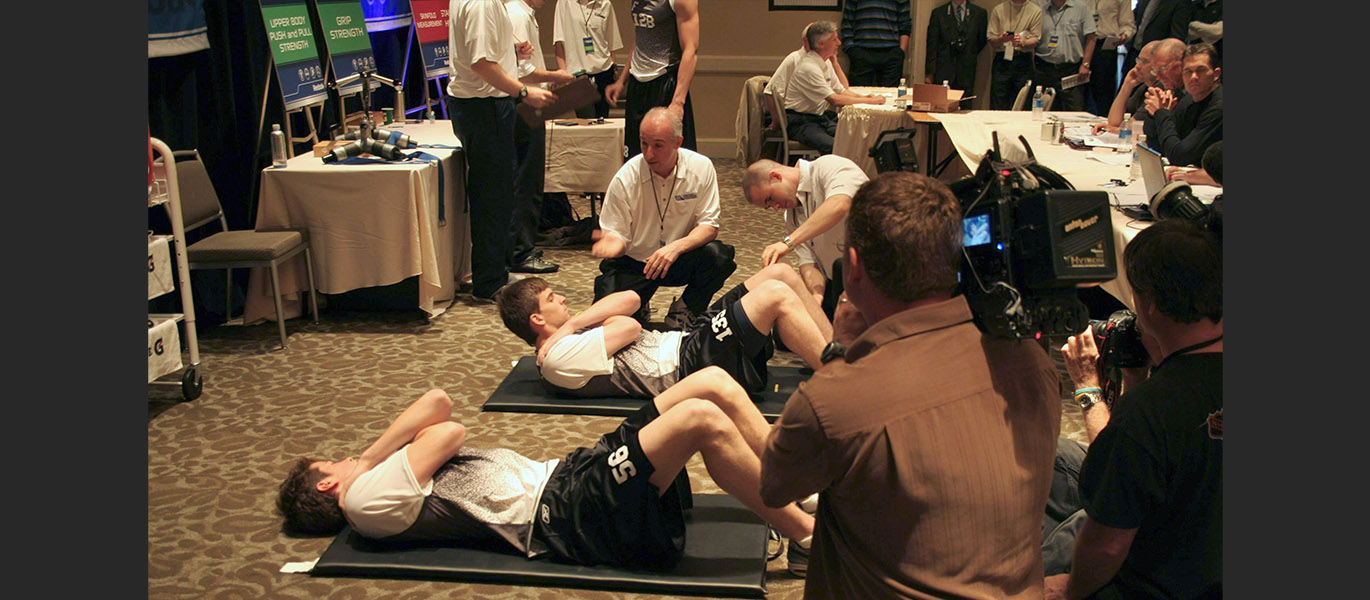
What matters most for predicting how well a player will perform once drafted into the National Hockey League?
A new analysis led by researchers with the University of Guelph’s College of Biological Science provides the first and most comprehensive look into how accurate the NHL’s scouting fitness tests are for predicting player performance and longevity over a 25-year period.
The study found that among 13 fitness tests performed at the NHL Scouting combine, peak leg power and ̇VO2max (a key measure of aerobic fitness) were best for predicting a player’s short-term career performance as measured in three ways: how quickly drafted players began playing; their career success in points; and their time on ice.
Overall, though, the numerous fitness tests were generally not predictive of either short- or long-term NHL career outcomes.
The study appears in the International Journal of Sports Physiology and Performance.
Since 1994, the NHL’s scouting combine has been a staple event leading to the entry draft. Prospective junior players undergo interviews, medical screenings and fitness tests over a period of several days. This year, the Scouting Combine will be held in Buffalo, NY and kicks off on May 30.
The fitness portion brings together around 100 of the world’s top hockey prospects to undergo standardized fitness and strength assessments to give scouts a chance to further scrutinize an already elite group of young players.

Previous analyses of the fitness combine have examined how well scores predicted draft position but until now, no one has examined how well they predicted actual performance, said Dr. Jamie Burr, a human kinetics professor in U of G’s Department of Human Health and Nutritional Sciences, who led the study.
“I was fortunate to be one of the exercise physiologists who assessed these players several times at the combine event in Toronto with co-authors from York University’s School of Kinesiology and Health Science,” said Burr.
“Most of those players assessed at those events have now gone on to play full careers, allowing us to use this extensive dataset – which exists nowhere else — to retrospectively compare fitness results to true short- and long-term NHL performance.”
They found that high aerobic fitness and peak leg power were the most common predictors of successfully transitioning to the NHL, getting time on ice and contributing offensively with points.
“These lower-body dominant physical characteristics highlight their importance for players breaking into the NHL, given how important explosiveness and speed is to the game,” said the study’s main author, Jeremy Cohen, who is currently pursuing his PhD at the University of Waterloo.
Differences between players with short and long NHL careers

Interestingly, analysis of those players who had longer careers and played for five or 10 seasons revealed that high career performance was linked to lower scores of upper-body strength at the fitness combine.
“This seemed counterintuitive to us at first,” said Cohen.
He said the research team’s theory for explaining that comes down to the short nature of NHL careers. Many players never play a full season. In fact, the average career length is roughly two years for around 75 per cent of players. And of all players invited to the combine, only 51 per cent of forwards and 46 per cent of defenders ever achieve NHL play—pointing to the intense selection within the league.
Those players who lasted five or 10 years in the NHL likely had more skills than simply strength and fitness, said Burr.
“When you see some of the skinny guys at the draft, you can wonder: ‘How did you make it here? You are not a remarkable physical specimen,’” he said. “But the answer may be that these players have spent their junior years focused on skills, not at the weight room. And if that is the base you start from, that’s going to stay with you and likely extend your career.”
In fact, Burr said, hockey scouts are often looking for those players.
“They figure, if you’re that good already to have been invited to the draft looking like that, just think of how you might develop once you mature and build upper body strength.”
Higher ̇VO2 max and peak leg power were associated with a quicker entry to regular NHL play, regardless of player position — despite such factors playing less of a role in draft selection order.
The fitness test models explained two to 16 per cent of the variance in hockey performance outcomes. That may not sound like much, but the authors note that many factors affect a player’s NHL career, including their mental maturity, coaching and injuries.
Player development should focus less on upper body strength
For elite players, these tests still accurately explained performance up to 10 years past the point of testing, with those players enduring careers that included injuries, team changes and coaching changes.
The authors say their findings suggest that player development should emphasize building leg power and aerobic capacity and focus less on upper body strength.
Further analysis may reveal how fitness combine test results relate to other measures of success beyond who gets the most points and time on ice, said Cohen.
“There may be other outcomes that could be just as important, so we can go back with this data and analyze it in different ways. The possibilities are endless,” he said.
Contact:
Dr. Jamie Burr
burrj@uoguelph.ca
